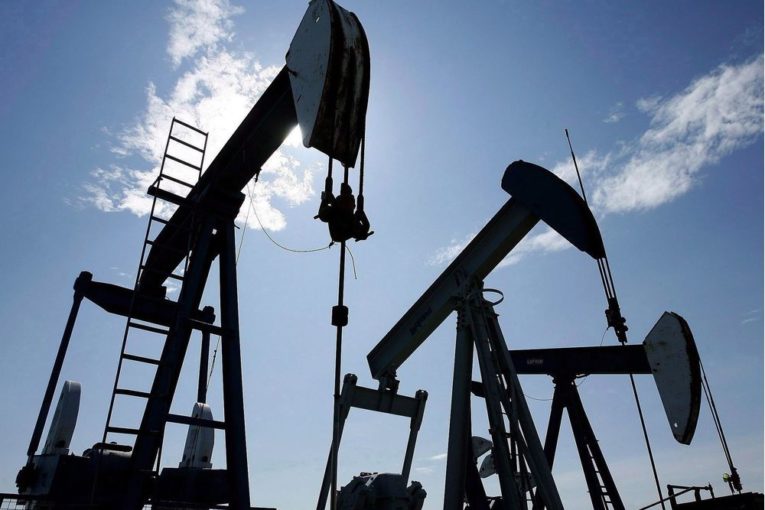
Stampede is finally here and all eyes are focused on watching the parade, chuckwagon races and nightly fireworks.
And rising oil prices.
The run-up of crude prices from US$60 a barrel to start the year, topping $75 earlier this week, has injected new life into oil markets.
Analysts are becoming increasingly convinced the price upturn in 2018 is more sustainable, based on several intertwined economic and geopolitical factors.
Prices are volatile, as seen Thursday when benchmark West Texas Intermediate (WTI) crude dropped $1.20 a barrel to US$72.94, but the overall outlook for the sector is slowly improving.
“The oil markets at the moment definitely have a bullish sentiment and are still, I think, itching to move higher,” Peter Tertzakian, executive director of ARC Energy Research Institute, said Thursday.
“The broad level of the mood is certainly more buoyant today, this Stampede, than last … but there are so many variables and disruptive forces still at play.”
On Thursday, Raymond James bumped up its forecast for WTI crude prices this year by $3 to US$68 a barrel. Likewise, AltaCorp Capital raised its expected oil prices by $4.50 to $67 a barrel.
Both firms also pushed up their price assumptions for 2019, albeit below current levels.
“There are plenty of reasons to believe that the crude complex is not only on strong footing today … but that the market is potentially entering a position of structural tightness over the medium term,” AltaCorp said in its report.
AltaCorp analyst Patrick O’Rourke noted the buildup in global oil inventories that dogged markets during the downturn has been erased, while incoming U.S. sanctions on Iran, and falling production in Libya and Venezuela, are also having an impact.
“The geopolitical issues are obviously playing a factor here,” he said.
The political dynamic was highlighted Wednesday with a tweet from U.S. President Donald Trump and a quick response from Iran’s OPEC governor, Hossein Kazempour Ardebili.
Trump admonished “the OPEC monopoly” for driving up gasoline prices in the United States, calling on them to “REDUCE PRICING NOW!”
In response, Kazempour chastised the U.S. president, saying his tweets have driven prices higher by at least $10 a barrel, and later telling Reuters “the price of over $100 per barrel is yet to come.”
The rhetoric comes a couple weeks after OPEC members and their allies agreed to increase output as demand keeps rising and questions linger about global spare capacity to meet those needs.
The agreement is expected to add up to an additional million barrels per day from Russia and Saudi Arabia, although analysts say there’s a lack of clarity about exactly how much oil will come on stream — and how quickly that will occur.
Meanwhile, global demand is expected to grow by about 1.4 million barrels per day this year and another 1.5 million in 2019, said Judith Dwarkin, chief economist with RS Energy Group in Calgary.
“So far, concerns about supply are outweighing the prospect of more barrels coming to the market,” said Dwarkin.
“The table has been set for relatively higher prices through year end.”
For an oil-producing province like Alberta, these indicators are headed in the right direction, yet there’s little overt celebrating going on, outside of regular Stampede parties.
If benchmark oil prices average around US$70 a barrel for the rest of 2018, it would bolster Canadian industry cash flows levels by $15 billion to $20 billion over last year, Tertzakian noted.
What will Canadian producers do with more cash in their jeans? Companies could increase spending, return some of the money to shareholders, or go on the hunt for mergers and acquisitions.
So far, most are waiting and watching.
“What they’re waiting for is just confirmation the current prices are not just a quick one-day, one-week spike,” said Jeremy McCrea, an analyst with Raymond James.
“We’ve seen prices rally before, only to fall right back.”
Some companies, such as Kelt Exploration Ltd., have already begun to move.
The Calgary-based oil and gas producer announced in May it will hike its capital spending this year by $65 million to $275 million. With higher oil prices and the Canadian dollar remaining low, producers are “getting the double benefit,” said Kelt chief financial officer Sadiq Lalani.
“We are obviously feeling pretty good about the second half of this year,” he said.
However, Lalani and others don’t expect to see a major upswing in industry spending until investor interest and oilpatch financings return.
Other factors are creating additional volatility.
The prospect of a global trade war precipitated by Trump is a major cloud on the horizon and could impact economic growth. The sanctions on Iran could become a significant issue, while production from U.S. shale oil plays continues to rise as prices climb.
“It’s welcome, but nobody is popping champagne corks yet,” said Gary Leach, president of the Explorers and Producers Association of Canada.
“I don’t think you’re going to see any kind of dramatic U-turn in spending on these recent climbs in prices.”
For the country’s drilling sector, expectations are also being contained.
Since the beginning of 2018, eight modern, larger-capacity drilling rigs have moved into the United States where investment has been picking up, said John Bayko of the Canadian Association of Oilwell Drilling Contractors.
In Canada, the response has been more muted.
“The summer hasn’t really picked up that much,” Bayko added.
“I do think our members are feeling a little more positive, for sure. After what’s gone on, they’re just happy to be busier … as opposed to just worrying about keeping the doors open.”
It’s a nice change for the oilpatch to head into Stampede on a high note with stronger crude prices.
But the tale of the second half of 2018 remains a work in progress.
Chris Varcoe is a Calgary Herald columnist.
You can read more of the news on source
